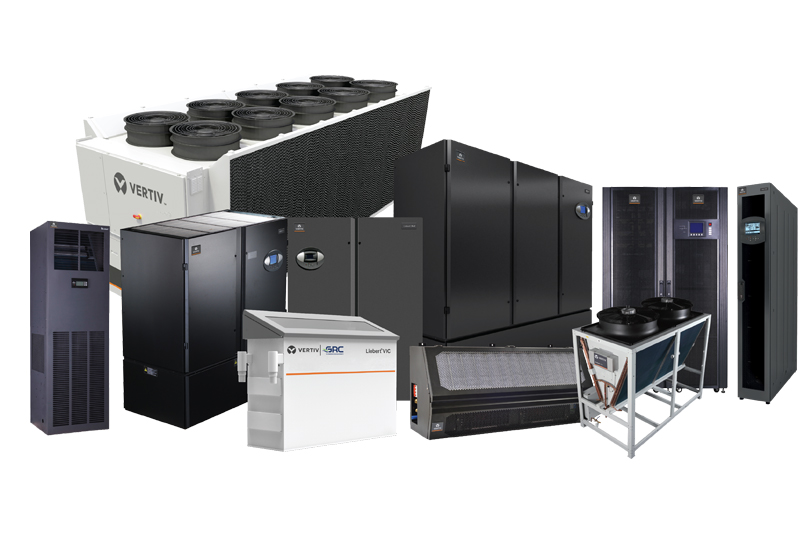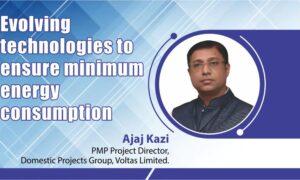One of the most basic challenges old buildings pose is the lack of infrastructure to install these advanced systems.
What are the main components of Building Automation Systems (BAS) to provide a thermal control building environment?
A Building Automation System (BAS) is a combination of hardware and software that works together to intelligently control monitor building systems, including heating, lighting, ventilation, air conditioning, fire protection, elevators, and access control. Simplistically described, the components that go into providing an efficient thermal controlled building include:
- The eyes and ears: Sensors are an important component of any automation system. Through a centralised control room, they help keep a track of humidity levels, temperature and number of people in a room, among other things.
- The brain: Otherwise known as the controller, it is the most important component of the BAS. It is responsible for collecting all data through the above sensors, ensuring thermal control monitoring, processing the said data and wherever necessary, flagging any discrepancies.
- The decision maker: An output device, based on the data received by the controllers, that quickly acts on and balances out any of these issues – like lowering the temperature wherever required.
- The coordinator: The output device requires a centrally controlled room to carry out the necessary functions. This system allows for interaction between devices and sharing of data with each other. The sensor and the output device, for instance, communicate with one another to carry out their respective functions and ensure constant monitoring
- The interactor: The user or terminal interface enables building managers to interact with the BAS. The information presented to the manager allows them to make sure the BAS is maintaining optimal temperature and whenever necessary, will manually intervene to resolve issues.
Vertiv data centre cooling solutions are designed to communicate with the BAS system, to be an integral part of the facility. These cooling solutions are designed with an intention to be monitored, controlled and managed remotely, depending on the nature of the application and the detailed requirement of an interactive cooling system with the BAS.

How do you view the development of new projects in India infused with automation, MEP and sustainability?
More often than not, automation is becoming an integral aspect of all businesses, and new building projects are no exception. With automated systems to monitor the HVAC, building managers ensure they make structures environmentally conscious and focused on reducing energy consumption.
In a BAS system, it is the cooling equipment that consumes the most amount of energy. Integrating the HVAC systems with BAS and making it smart is becoming a fundamental need, not only from an energy saving standpoint but also from a sustainability point of view. All upcoming projects have a more focused ask on monitoring and control functions and require real time data in a synchronised manner at an equipment level, floor level, and tenant level.
What are the main challenges of using Building Automation Systems in old buildings and how can it be upgraded?
One of the most basic challenges old buildings pose is the lack of infrastructure to install these advanced systems. Automation systems require special niches/ dedicated spaces to be created for the installation of sensors and other equipment. The existing infrastructure might not have this provision and it might be cost heavy for the managers to create these spaces at a later stage. Additionally, at times, if the structure is too old, it might not be strong enough to withstand any renovations.
Another common concern from building owners is that the BAS becomes obsolete in just a few years. To interpret this further, most people consider the BAS being obsolete in terms of the technology being used in the equipment. This technological obsolescence poses low risk as compared to the larger concerns faced in the Commercial Real Estate (CRE) Market. But there are two aspects to this obsolescence, one is technological which can be budgeted and planned, at least in theory. And the other, is the functional one which poses a serious concern to the decision makers to overcome this challenge. Continuous capital investments are therefore required to upgrade the existing equipment.
What are the latest technological trends being witnessed in the Building Automation Systems?
As the world operates in a hybrid working environment, with technology at the heart of all innovation, it’s important for BAS to evolve with the current times. Some of the trends we foresee are as follows:
- Going wireless: The world has gone digital, and people have adapted to this new world order. By transitioning to a wireless system, it enables faster installation and modifications and also allows for remote monitoring of the building. With everything now moving to a cloud-based set up, smart buildings can also allow for the storage and processing of data from multiple locations, making it a more flexible process.
- Adopting IoT: To go one level higher, buildings can be installed with advanced building management systems equipped with Internet of Things (IoT). BAS combined with IoT paves the way for a more detailed report about the building. For instance, instead of just monitoring the temperature of a specific area or room, the system can also inform the manager, on a real-time basis, about any issue with the sensors or equipment itself. This prevents failures and helps in reducing maintenance and repair costs.
- Other emerging technologies: With the anticipated advent of 5G in India, there are a lot of opportunities opening up with regard to BAS. 5G along with technologies like big data, edge computing, artificial intelligence (AI), and machine learning (ML), will provide companies a means to introduce more complex algorithms to process the data collected from BAS and come out with innovative solutions.
- Real-time IAQ: Indoor air quality (IAQ) continues to grow in importance as studies suggest that there is a correlation between high concentration of CO2 and diminishing cognitive performance. Monitoring IAQ realtime at workplaces provides some reassurance to building managers about the health of the occupants. Therefore, HVAC systems need to be smart and be able to integrate with BAS for critical controls and monitoring. And as a result, eco-friendly HVAC systems and Smart HVAC technologies designed for automation, are increasing in demand. It is important for BAS system providers to ensure good connectivity to process data and improve control and monitoring.
Cookie Consent
We use cookies to personalize your experience. By continuing to visit this website you agree to our Terms & Conditions, Privacy Policy and Cookie Policy.















